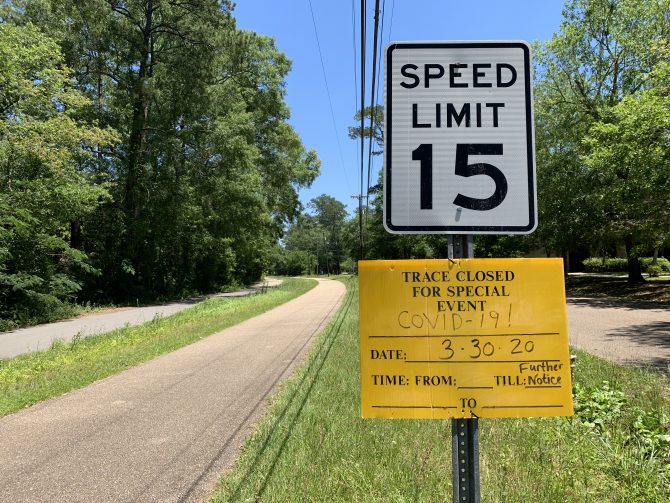
We're in the midst of a historic moment, the likes of which has not been seen for over a hundred years. Although there are many things outside of our control in the present, we can take actions right now that have a positive effect on the future. One small way to make such a contribution is to record our experiences, and those of our family members, so that future generations and historians can understand what life was like in 2020.
What innovations did we pursue, what did we create? How did we change our routines, or add new skills to our repertoires? What did our blocks or our neighborhoods feel like? Were we personally affected by the virus, in our health or in our careers? These are all essential questions that your individual account could help answer.
To help document COVID-19 in St. Tammany Parish, you can send one photograph and/or a written account that sums up the experience for you to our genealogy librarian at genealogy-covington@stpl.us.
If you would be willing to participate in a short oral history interview about your COVID-19 experience, contact Leidy to schedule an appointment, again at genealogy-covington@stpl.us. These would be less than 30 minutes, and conducted remotely over Zoom, recording only the audio of the interview.
For efforts that you can undertake on your own, here is some advice on journaling, photography, and conducting your own oral histories.
Journaling
Keep a diary, as regularly as you can. Date your entries and try to add detail, no matter how mundane. Get specific: mention street names or business names. When referring to friends or family for the first time in the diary, write down their full names. If you can draw, sketches added to diary entries can make for an even richer record.
Cut newspaper or magazine clippings that help illustrate the current moment for you. Write the date on the clipping, and the source, if the clipping does not contain a masthead. You can either leave these clippings loose in your diary, or secure them to diary pages.
For preservation purposes, stay away from clear Scotch tape. Glue should be avoided as well, unless it is non-acidic. If possible, find acid-free tape or glue to secure items to diary pages without risk of information loss.

Photography
Take photographs that depict what life is like in your community. Every detail is a possible clue for a later historian, so don't shy away from subjects that might seem commonplace: the grocery store, a homemade sign in a neighbor's yard, chalk drawings in a driveway.
The surest way to preserve a photograph for posterity is to print it. If you don't own a printer or photo paper, there are a number of online services that will create prints of your images, and then mail them to you.
If you choose to preserve them in digital form, store them in two places: your computer, as well as an external hard drive. Check them annually to ensure that the files open correctly, and copy them to newer formats as needed, with an eye towards migrating them every five years.

Oral History
Much of our local history is not necessarily going to be recorded in the newspaper or in history books, but will be held in the memories of residents. That may be especially true for a moment like the one we are currently in. One way to record those memories is to conduct an oral history - with no specialized equipment necessary.
Your oral history might consist of getting an older relative to recount their life story, or you may want to record a first-responder's account of what their job has been like during the epidemic. If you don't own an audio recorder, you can use the voice memo app on your smart phone, or you can download a more specialized recording app.
Prepare an outline and in-depth questions beforehand. Aim for open-ended questions, keeping in mind that you are trying to record the facts of your interviewee's experiences. Start the interview by asking basic identifying questions: name, date of birth, parent's names, birthplace, etc. Try not to interrupt, allowing interviewees to develop their thoughts fully. Ask follow-up questions that aim to fill in details or place stories in context. Encourage your interviewee to get specific about place and business names, and about when things happened.
After the interview, create a transcription of the recording, and send a copy to your interviewee for corrections. Store the audio file and transcript of the interview in two separate locations; you may also want to print a copy of the transcript for your records. Include the date and location of the interview as a header on the transcript, and be sure to identify yourself as the interviewer, if you did not do so on the recording.



Add a comment to: Documenting the Effects of COVID-19 for Future Generations